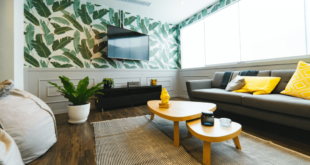Indian interior design is deeply steeped in its culture whilst still incorporating subtle outside influences. Through the centuries, the styling has grown and evolved, and as we tread on towards the next century, modernization is slowly gaining foothold in many homes. Despite this, the authenticity of the design has not been lost even with all the ongoing modern updates.
Interior Design the Indian Way
Creating new interiors or remodeling new ones can be quite an involving process, but it is easily doable with some creativity and a solid work plan. When you have the right ideas and inspirations in mind, a professional designer might not be necessary. The ideal design harnesses the riches of Indian ethnicity and combines it with modern influences from other countries across the world. It should be well thought out as it is the details that capture the essence of an authentic Indian home.
The Color Palette Plays a Major Role in Indian Interior Design
One of the defining attributes of Indian styling is the color selection. Exotic and vibrant colors are the first noticeable thing in the Interior. These are usually inspired not only by the country’s history, but also nature elements, spices, blooming flowers and landscapes. Traditionally, a saturated palette has been the classic approach, but it is easy to do too much.

Bright colors can be visually overwhelming when there are too many of them. The idea is to find the right combination of complementary colors. Earthy tones are always a safe bet for walls and floors, or neutral ones if you want more freedom with your furniture and other accenting pieces.
Bi-color combinations also work well, such as pink and yellow. Paying attention to how the colors interact with each other, and with the furnishings around the room is essential. The goal is to achieve an aura of hospitality in each room, and the right combination of rich colors achieves that.
Furniture – An Important Part of Indian Interior Design
Solid wood has been the mainstay of Indian interiors throughout history. It forms an important element in the design, with teak and ebony being the preferred cuts of wood. For those with more expensive tastes, rosewood is the ideal as it is exotic and is very richly hued.
The craftsmanship is precise and purposeful, with curved armrests and legs and delicate carvings defining the design. Inlay work can be done in wood metal, or even ivory for a more royal appeal. The use of wood can be extended to all other pieces including tables and sofas. The amount of detailing work that goes into the creations is what sets them apart.
Most Indian Interiors use furniture sets for conformity and consistency. While this remains the traditional approach, mixing up your furniture results in more dramatic but more stunning interiors. This has to be complemented by the right choice of upholstery. The textures and colors have to be carefully considered to ensure that the authenticity is not lost. With mismatched furniture, this is easier to do, as accenting pieces like throw pillows and blankets can achieve the desired visual effect.

Different levels of seating to complement the sofas, such as diwans and high chairs are welcome, but they should not clutter the space. Including a swing or jhoola is also a necessity as it completes the feel of the living room. The wooden plank suspended from the roof with heavy metal chains offers an outlandish point of relaxation.A low coffee table has to be present. The ideal one is crafted with large legs, carved edges, and topped off in tempered glass or a solid wooden block.

Sofa styles need not be predictable, especially when the design is meant to be contemporary. Opting for high quality upholstery such as velvet or leather can give your interiors a refreshing style. The right fabric will be a good investment as it will be durable, and offer optimal comfort.

Flooring
India enjoys a predominantly warm climate, so floors need not necessarily have thermoregulation properties. Wooden floors, while classy and exotic, are not the most wanted because of their cost and maintenance. Granite and tiles are the most common, and the availability of a huge array of designs and styles makes them the most compelling option for many homeowners.

Marble is also a highly desired material, as it exudes of royalty and class and is ideal for luxurious homes. It is mostly used in bathrooms or in secluded places such as Pooja rooms where the pearly whiteness of the marble resembles purity and cleanliness.

The tones used for the flooring material should work well with those used for the walls. When unsure, it’s best to go for neutral colors such as grey as they offer you more design options for the rest of the room. Otherwise if bursts of color are needed for the floors, these can be achieved through the use of colored area rugs and patterned carpets. Indian carpets are rich in color and use high quality fabrics and are a safe bet regardless of the overall styling choices you are going for.
Décor
Indian interior decoration relies on the combination of different décor elements to be fully achieved. Standalone furniture pieces such as cabinets and chests should be as mindful of their aesthetics as they are of their functionality. Typically, they should be painted in bright colors and contain detailed inlay work done using natural stone, ivory or metal. If these are antiques, they can be used as accents. If not they can be used as centerpieces to elevate a room.

Traditional elements should feature in every room. These can be anything that serves your unique tastes, such as curious and statues. Artwork is part of Indian heritage, and elaborate masterpieces should be hang in living and sleeping areas and accentuated in proper lighting.
Where art pieces are too expensive, warli paintings, or desi motifs plastered on entire walls work just as well, if not better. In addition handicrafts can be strategically placed to reflect the richness of India’s culture. These can include everything from masks and mirrors to metallic ornaments and stone carvings. There is a near inexhaustible selection of items that you can use to create an authentic desi vibe.

Fabric should feature heavily in an Indian interior as they have been a characteristic throughout history. They can be incorporated into the design in a variety of ways- from long flowing drapes for large windows, bedspreads to smaller ones thrown over foot stools and side tables.
Dabu or ikat prints used in fine fabrics make awesome upholstery option for your cushions and pillows. The use of the handwoven fabrics, textiles and patterns is the best option in creating a rustic interiors. Jalis are also encouraged as room dividers where privacy or security is of least concern.
Contemporary Interior Design Ideas Indian Style
Indian interior design ideas are mostly influenced by tradition, but modern trends are finding their way into many homes. Contemporary design does not necessarily shun this tradition but is rather inspired by it. Core concepts are embraced and evolved to suit the new age. A ‘less is more’ philosophy is being observed where a minimalist approach is preferred. It’s because it focuses more on creating open space by using fewer furnishings. The desi vibe is created through ornamental pieces or paintings, while the simplicity is achieved by primarily using two colors.

Indian influence is perhaps least felt in the kitchen as far as design is concerned. It is however stylistically different from other Asiatic, European or Western designs because of how distinct and unique Indian food is. A contemporary desi kitchen has a few defining characteristics. The use of polished wood is significant here as it is not only elegant, but also water resistant.
Glass partitions are best for defining cooking and dining spaces if you have a more open plan kitchen. Natural materials are best for counters, as stones such as quartz are both stunning and stain resistant. Bold prints or artistic prints on the cabinet doors and back walls can be used to increase the Indian ambiance.
The best design for the contemporary Indian kitchen is modular. It allows you to make the most of your kitchen, and offers you the most abundant storage space, which you will surely need for all your herbs and spices.

The beauty with Indian interior design is that it can be spread throughout an entire house, or can be localized to one area or room within the house. The versatility of this design is what enables Indians across the world to bring a little bit of home with them wherever they are. Other cultures have quickly taken a liking to it too, and it is now easy to see jhoolas and jaalis find homes in the west and Far East.



